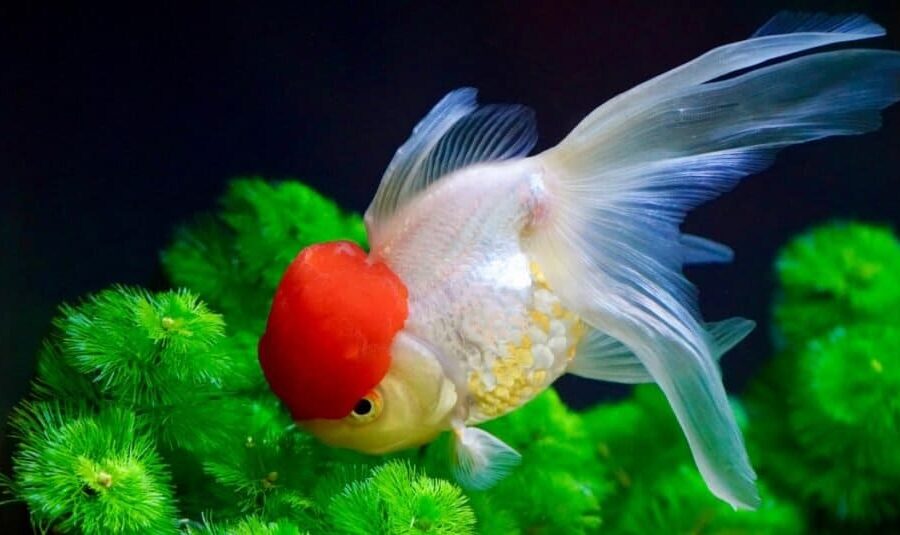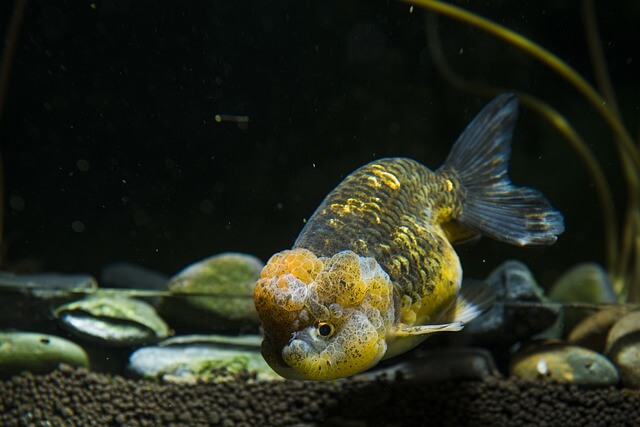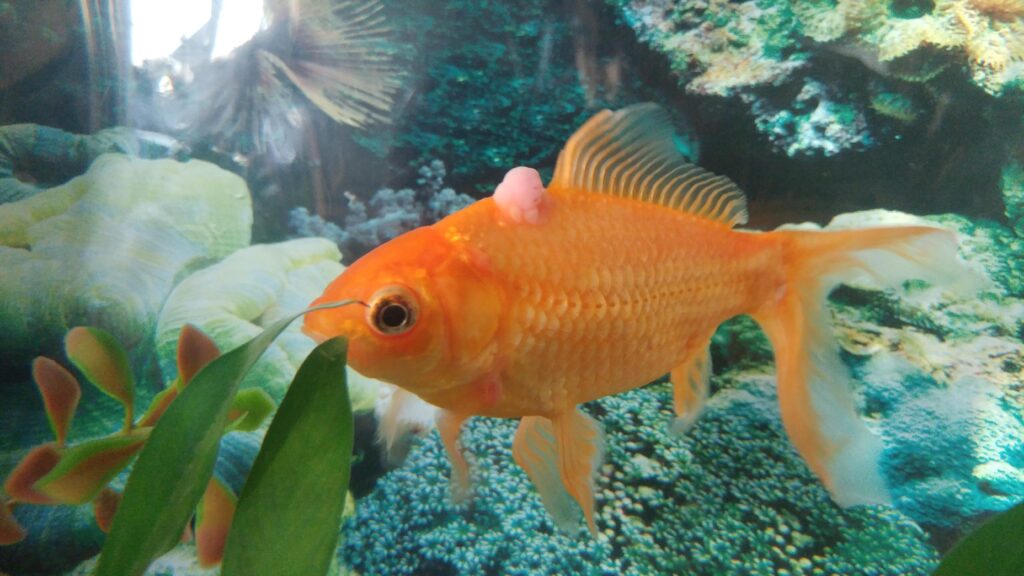
Goldfish Tumors can be a concerning sight for any pet owner. These unsightly lumps, while not uncommon, require a deeper understanding of what they are, the different types, and the symptoms to look out for. In this comprehensive guide, we’ll delve into the root causes of these growths, taking a close look at the role of genetics, environment, and nutrition.
We will also explore how these tumors can affect your goldfish’s health, behavior, and lifespan. Additionally, we will examine the potential impacts of such tumors on the wider aquatic ecosystem. Stay tuned for a thorough exploration of this important topic.
Understanding Goldfish Tumors
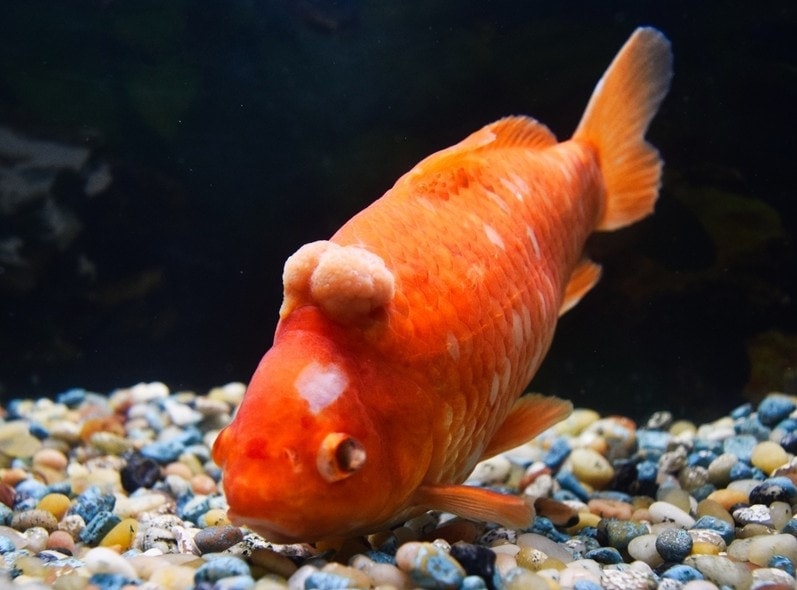
Picture this: It’s a normal day and you’re there, just chilling, watching your aquatic pets doing their thing. Suddenly, you notice something off about your little gold treasure. Are those bumps normal? Before you start panicking and imagining the worst scenarios, let’s go through the basics.
What is a Goldfish Tumor?
First things first, goldfish tumors tend to be more common than you’d think. They are abnormal growths that can pop up on your little pet, just like unwanted guests. These tumorous masses can vary in size from just a small, mistakable lump to a rather noticeable bump. Sometimes, you might mistake an ordinary goldfish growth for a tumor, but you don’t want to find out the hard way.
Types of Goldfish Tumors
Goldfish can develop different types of tumors, each with its own characteristics and potential effects on their health. These tumors can be categorized as benign or malignant:
- Benign Tumors
- Lipomas: These are fatty tumors that are generally harmless and do not spread to other parts of the body.
- Papillomas: Non-cancerous growths that typically have a wart-like appearance.
- Malignant Tumors
- Melanomas: These are cancerous tumors that arise from pigment-producing cells called melanocytes.
- Fibrosarcomas: A type of cancer that develops in the connective tissues of the body.
While some of these terms might sound technical, they provide useful information about the nature and potential risks associated with each type of tumor.
Common Signs and Symptoms
So, how do you know when your goldfish is hosting an unwanted party in its body, aka growing a tumor? Changes in their swimming pattern, loss of appetite, and a noticeable lump are some things to keep an eye out for. Also, remember, a goldfish won’t send you an SOS message about a budding tumor, so keep those detective glasses on!
Well, that was heavy, wasn’t it? Now hold tight, because this ride is about to take a deeper dive into what exactly causes these tumors in goldfish. We promise, it won’t be as melancholic as it sounds. After all, knowing is half the battle, right? We’ll also throw in some science stuff to make you feel like an ocean biologist.
Unmasking the Causes of Goldfish Tumors
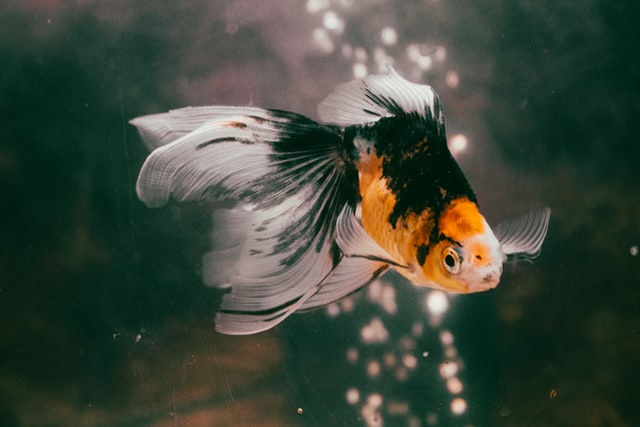
The appearance of tumors in goldfish often leaves owners confused and distraught. But understanding the underlying causes can put us in a better position to prevent and treat these unwelcome guests. Here we dive into the three leading causes which play hide and seek behind the scenes: genetics, environment, and diet.
Genetic Roulette
Much like people, some goldfish are genetically more likely to develop tumors. It’s a sad truth that can’t be changed – because hey, no one can choose their parents or their genes, right? Inherited genetic mutations can cause cells to grow and divide at an unusual rate, leading to tumor formation. So, before buying a goldfish, try asking about its family health history. Just kidding! But seriously, it’s essential to buy from reputable breeders to reduce the risks.
The Enemy is Close: Environmental Triggers
Life in a fishbowl isn’t always as tranquil as it looks. The risk of tumor development can be heightened by certain environmental factors. These include poor water quality, prolonged exposure to direct sunlight, and even the presence of certain bacteria or parasites. Just add “Goldfish Tumor Prevention” to the list of reasons why maintaining a clean, balanced aquarium environment is crucial. (Your little finned friend will definitely thank you in goldfish language).
All About the Grub: Diet and Nutrition
We all know the saying, “You are what you eat.” Unfortunately, so are our goldfish. A diet insufficient in vitamins and minerals or high in processed and fatty foods can influence tumor development. If you want a healthy fish, avoid feeding them “junk” food. Opt for a complete, balanced, and nutrient-rich diet instead. Who knew that even goldfish could be health nuts?
That’s the scoop on the causes of goldfish tumors. But here’s the thing, knowing what causes their tumors isn’t enough. It’s crucial to delve into how these tumors affect your goldfish’s physical and mental health, as well as their lifespan. So, buckle up, folks! In the next section, we will venture further into the murkier (muckier?) waters of goldfish health. Remember, knowing ain’t half the battle here, it’s the entire aquarium! And with that said, let’s dive straight into section 3.
Health Implications of Tumors on Goldfish

We’ve gained a basic understanding of tumors in goldfish and the potential causes. Now, let’s dive deeper into the way these pesky tumors can impact the overall health of our beloved goldfish. Hold onto your snorkels, folks!
Impact on Physical Health
When tumors creep in, they don’t do any favors for your goldfish’s physical appearance or health. It’s not a great look and is downright uncomfortable. These abnormal lumps can hinder their swimming ability, restrict vision if near the eyes, or obstruct eating if they’re around the mouth. It’s the equivalent to us trying to do the tango with a giant backpack tied to our waist. Uncool, right?
Changes in Behaviour
As you’ve probably guessed, being unwell can make the brightest goldfish a gloomy Gus. You may notice them being less active, refusing food, or tending to float or rest more than usual. Think of it as their aquatic version of taking a sick day and eating lots of soup… but in this case, the soup is the water they’re swimming in.
Impact on Lifespan
Now, for the tough part. The presence of tumors may indeed shorten the lifespan of your goldfish. It’s not something we like to discuss, but it’s important to be realistic. In the wild, the life expectancy of a goldfish is over 20 years, but a tumor can cause your home aquarium to become a bit of a mid-life crisis rather soon.
Alright! That’s some heavy stuff we just went through. But awareness of these issues helps us to better care for our goldfish and seek appropriate treatments. Next up, we’re going to see how tumors in goldfish can affect the aquatic ecosystem, making your fishbowl more like a dramatic episode of Aquatic Big Brother. Stay tuned!
How Tumors Affect the Aquatic Ecosystem
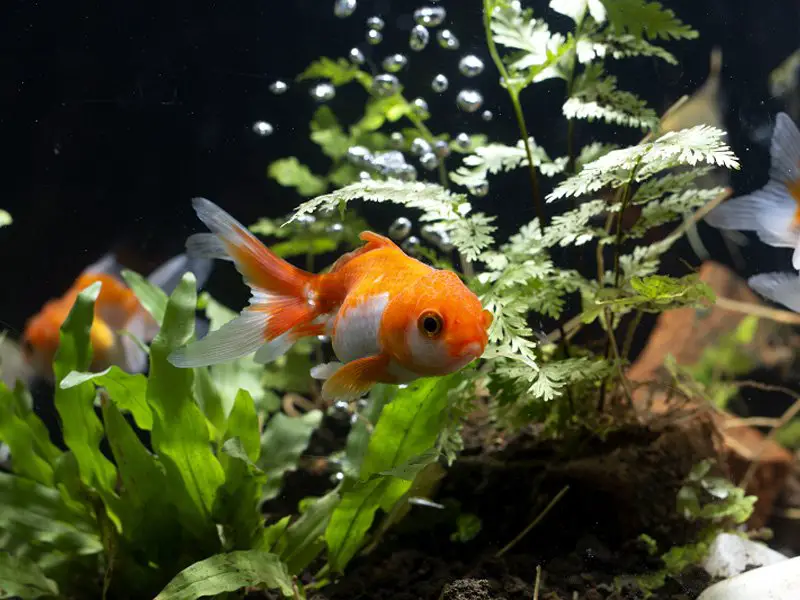
You may be thinking,” My tiny finned friend is just a small blip in the grand oceanic map, can it really stir the waters?” Oh, yes, my friend, the ripples can indeed reach far. Let’s dive in, shall we?
Impact on Water Quality
Here’s the shocker – goldfish with tumors can cause water quality to nosedive. How, you ask? Well, these poor fish have an altered metabolism due to the underlying disease. This altered state changes how they utilize food and excrete waste. The result is an uptick in potentially harmful byproducts corrupting the water. It’s sort of like that one time you ordered too much Thai food and the leftovers stunk up the fridge. Except, in this case, the fridge is your goldfish’s home.
Effect on Other Marine Life
We bet you’ve heard of the butterfly effect, haven’t you?
(yeah, not the Ashton Kutcher movie, the other one.)
It’s applicable here as well. A sick goldfish can pass infectious agents to other marine buddies. And we all know, my friends, that misery loves company. So, what starts with one goldfish might turn into a whole sad shoal. Now, who wants to go to that aquarium party?
Changes to Aquatic Biodiversity
Lastly, goldfish tumors can shake up the entire underwater neighborhood. Sick fish may not play their role in maintaining the ecosystem, causing a ripple effect. Imagine if bees stopped pollinating flowers – there goes our honey on toast! Goldfish, though not honey-makers (sadly), play a subtle but similar role underwater. So even though it may not involve breakfast, it’s still a big deal, okay?
And dear readers, that’s just how deeply an illness in a goldfish can rock our aquatic ecosystem. Now, brace yourself as we are heading into our next discussion – ways we can help our tiny water-breathing friends.
Dealing with Goldfish Tumors
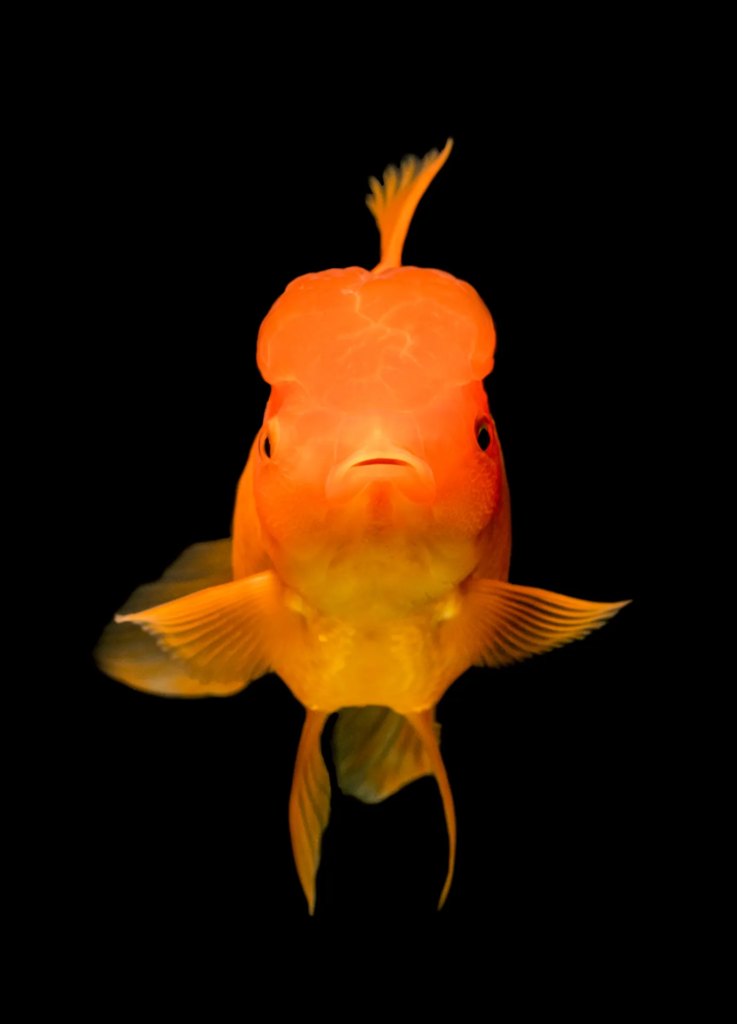
The word ‘tumor’ may make you think of a dramatic hospital scene. But when it comes to goldfish, it’s slightly less theatrical (though no less important). Dive fins-first into treating and preventing this health nuisance!
Treatment Options
Dealing with a goldfish tumor doesn’t have to be daunting. Here are some specific treatment options that a fish vet might recommend:
- Surgery: This is a common option for removing tumors, especially if they’re causing discomfort or obstructing your fish’s normal functions.
- Injectable Antibiotics: Sometimes, an infection might accompany a tumor. Injectable antibiotics can help fight off these infections and prevent further complications.
- Environmental Adjustments: Post-treatment is as important as a teenage girl’s skincare routine. Here are some steps to consider:
- pH Balancing: Ensure the water’s pH level is optimal for goldfish, typically around 7.2 to 7.8.
- Temperature Checks: Maintain a consistent water temperature within the range of 68°F to 74°F (20°C to 23°C).
- Beneficial Bacteria: Introduce beneficial bacteria to help break down waste and improve water quality.
It’s essential to make these adjustments to prevent future tumors and promote overall health in your goldfish.
Preventive Measures
As they say, prevention is better than cure – or in this case, surgery. Giving your goldfish top-notch conditions is like treating them to a VIP backstage tour in life.
Use quality filtration systems and change the water regularly. It’s like a goldfish spa treatment. Feed them a good diet to fend off potential illnesses. Think of it as their personalized organic farmer’s market trip.
Onward and upwards, or rather, downwards: let’s move to caring for a goldfish with a tumor.
Caring for a Goldfish with a Tumor
First up, don’t panic. Take deep breaths. Maybe do a little yoga. Your goldfish needs a calm owner, not a frantic chicken impersonator. Post-treatment care is as crucial as the treatment itself.
Keeping the water clean and the environment stress-free will ensure a better recovery. Picture it as a seaside resort for your fishy friend. Spend quality time observing them. Keep an eye out for any behavior changes, like a fierce mom on the school playground.
Tackling goldfish tumors requires an attentive owner, health measures, and perhaps even a bit of courage. But hey, you’re a goldfish parent! You can handle it. Next, let’s dive into some real life stories of goldfish versus tumors.
Case Studies on Goldfish Tumors

If you’re thinking that goldfish tumors are a doom-and-gloom only topic, brace yourself. There’s a light at the end of the tunnel and I’m pretty sure our finny friends would rejoice if they could hear these success stories!
Success Stories of Tumor Treatment
Don’t lose hope just yet! Many goldfish pet parents have successfully treated their aquatic kids. Sarah, a mother of three goldfish, noticed a strange growth on her pet, Bubbles. A round trip to the vet and some targeted treatment later, Bubbles bounced back to health, swimming in circles in his tank, happier than he’s ever been.
Tom, another aquarist, caught his goldfish, Goldie, showing signs of a tumor early on. Immediate antibiotics, followed by constant water treatments and careful monitoring, set Goldie back on the healthy track. It was a tough time for Tom, but seeing Goldie swim with gusto made everything worth it.
Ready to dive deep into some less successful stories? Don’t worry, they’re not all bad news. Sometimes, they’re learning experiences in disguise.
Understanding What Went Wrong
Now, onto the tales that don’t exactly have the happiest endings. Believe me, there’s more to learn from these. Jack had a goldfish named Finley, who was unfortunately afflicted with a tumor. Despite numerous treatment attempts, Finley didn’t make it. Turns out, the diet that Jack was feeding Finley wasn’t cut out for goldfish health. He learned the hard way that poor diet and nutrition can lead to tumors. So, don’t skimp on that goldfish chow or quality flakes, folks!
Kim’s goldfish, Splash, was also a victim of a tumor. The cause? An ill-maintained aquatic ecosystem. Poor water quality in her tank spelled trouble for Splash. We take this as a reminder to avoid cutting corners in tank maintenance.
And there you have it – heart-warming victories and hard truths from the world of goldfish tumor treatments. Stories like these serve as important reminders and valuable lessons for goldfish guardians everywhere.
Wrap Up
In understanding goldfish tumors, we’ve navigated through intricate components like genetic factors, environmental triggers, and diet. We’ve also dived into the substantial impacts it has on the fish’s health and the profound effects on the aquatic ecosystem. The issues are daunting but armed with knowledge, we can make a difference.
Finally, the key to dealing with these tumors lies in the spectrum of treatment options, preventive measures and ensuring dedicated care. Cases studies bring us hope and wisdom. Finding successful treatments is a cause for celebration, while understanding the mishaps allows us to avoid similar pitfalls. Let’s continue to learn and create better, healthier environments for our finned friends.
Frequently Asked Questions (FAQ)
Question: What is a tumor in a goldfish?
Answer: It’s an abnormal growth of cells in the goldfish body, which can be benign (not cancerous) or malignant (cancerous).
Question: Can a goldfish tumor be treated?
Answer: Yes, depending on the type and location of the tumor, it can be treated with antibiotics, water treatments, and sometimes surgery.
Question: Does a tumor affect a goldfish’s lifespan?
Answer: Tumors can significantly reduce a goldfish’s lifespan if not detected and treated early.
Question: Can a goldfish tumor affect other fish in the tank?
Answer: Goldfish tumors themselves aren’t contagious. However, the deteriorating water quality due to a sick goldfish may impact the health of the other aquatic life in the tank.
Question: Can goldfish tumors be prevented?
Answer: While not all tumors can be prevented, maintaining clean water conditions, providing a balanced diet and minimizing stress can reduce the risk.
Question: How to care for a goldfish post-tumor treatment?
Answer: Care includes maintaining optimal water conditions, providing nutritious diet, monitoring the goldfish for any signs of recurrence, and regularly consulting with a vet or professional aquarist.
Question: Are there any successful cases of goldfish tumor treatments?
Answer: Yes, many aquarists have successfully treated goldfish tumors. However, results may vary depending on the tumor type, stage, and the individual fish’s overall health.

